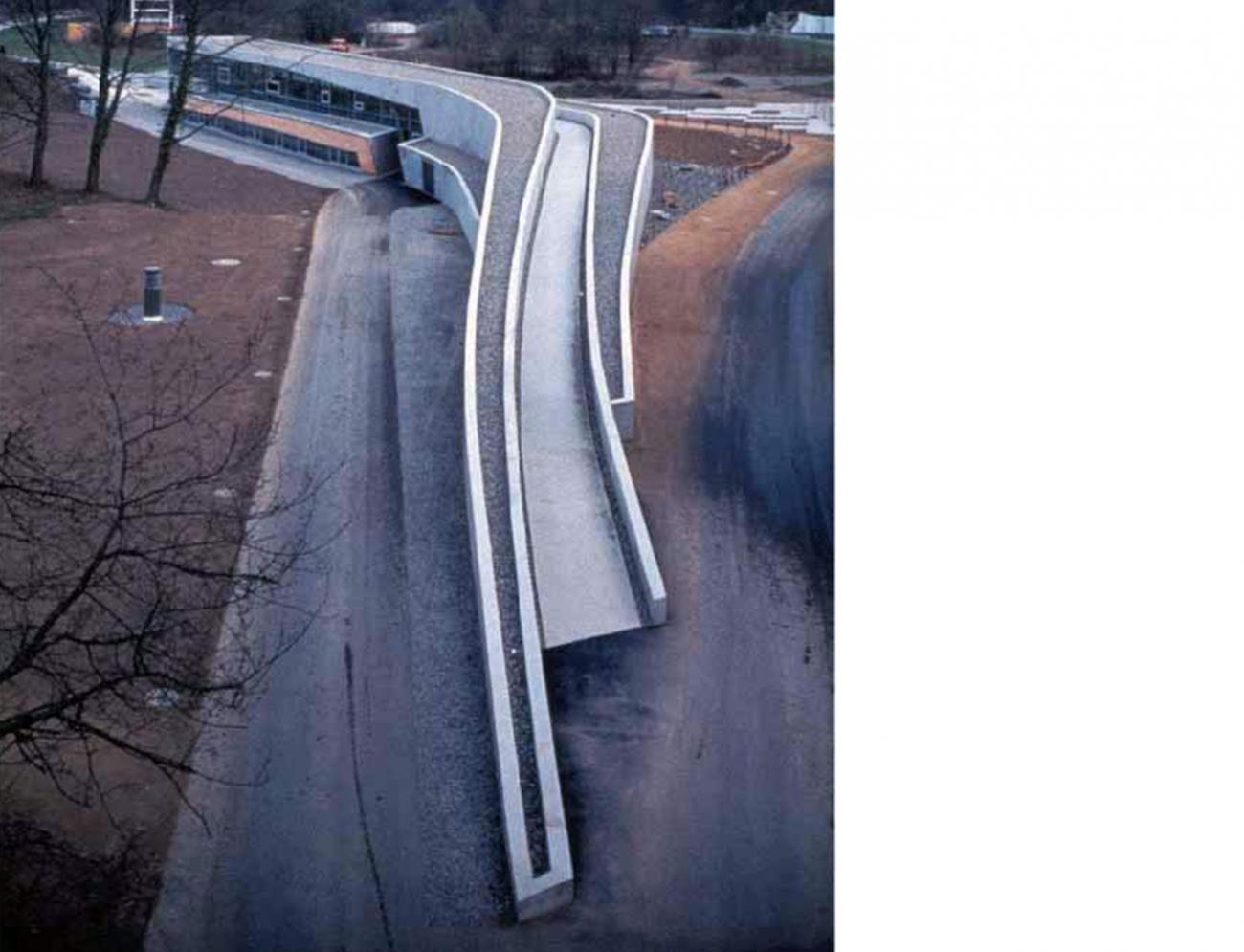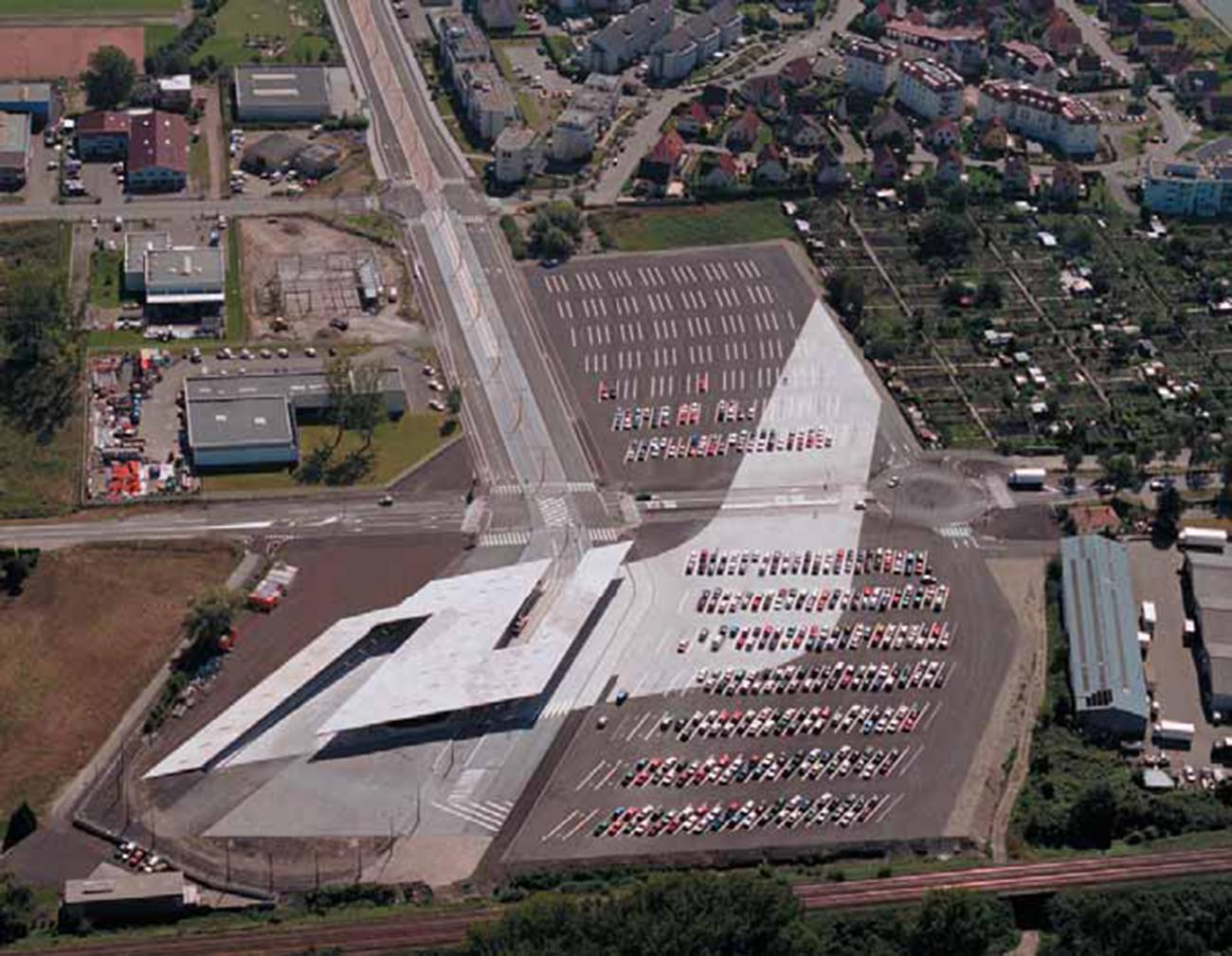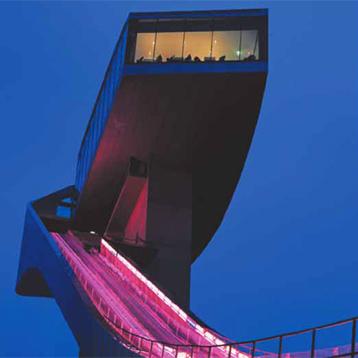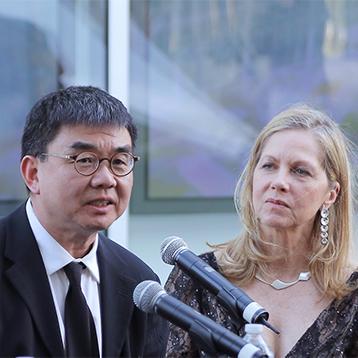Zaha Hadid Becomes the First Woman to Receive the Pritzker Architecture Prize
Zaha Hadid, an Iraqi born British citizen has been chosen as the 2004 Laureate of the Pritzker Architecture Prize marking the first time a woman has been named for this 26 year old award. Hadid, who is 53, has completed one project in the United States, the Richard and Lois Rosenthal Center for Contemporary Art in Cincinnati, Ohio; and is currently developing another to co-exist with a Frank Lloyd Wright structure, the Price Tower Arts Center in Bartlesville, Oklahoma.
Her other completed projects in Europe include a fire station for the Vitra Furniture Company in Weil am Rhein, Germany; LFone/ Landesgartenschau, an exhibition building to mark the 1999 garden festival in that same city; a car park and terminus Hoenheim North, a “park and ride” and tramway on the outskirts of Strasbourg, France; and a ski jump situated on the Bergisel Mountain overlooking Innsbruck, Austria.
She has numerous other projects in various stages of development, including a building for BMW in Leipzig, and a Science Center in Wolfsburg, both in Germany; a National Center of Contemporary Arts in Rome; a Master Plan for Bilbao, Spain; a Guggenheim Museum for Taichung, Taiwan; and a high speed train station outside Naples; and a new public archive, library and sport center in Montpellier, France.
In announcing the jury’s choice, Thomas J. Pritzker, president of The Hyatt Foundation, said, “It is gratifying to us as sponsors of the prize to see our very independent jury honor a woman for the first time. Although her body of work is relatively small, she has achieved great acclaim and her energy and ideas show even greater promise for the future.”
Pritzker Prize jury chairman, Lord Rothschild, commented, “At the same time as her theoretical and academic work, as a practicing architect, Zaha Hadid has been unswerving in her commitment to modernism. Always inventive, she’s moved away from existing typology, from high tech, and has shifted the geometry of buildings.”
Continuing, Lord Rothschild said, “In her fourth year at the Architectural Association in London, as a student of Rem Koolhaas (himself a recent recipient of the Pritzker Prize) her graduation project was called Malevich’s Tectonik. She placed a hotel on the Hungerford Bridge on the Rivers Thames, drawing from suprematist forms to meet the demands of the program and the site. It’s a happy coincidence therefore that this year’s prize ceremony should be taking place in St. Petersburg, Russia, where Malevich lived and worked, a city of extraordinary beauty and originality.”
The formal ceremony for what has come to be known throughout the world as architecture's highest honor will be held on May 31, 2004. At that time, a $100,000 grant and a bronze medallion will be bestowed in the State Hermitage Museum followed by a reception and dinner in the Grand Peterhof Palace. The prize presentation ceremony moves to different locations around the world each year, paying homage to historic and contemporary architecture.
























